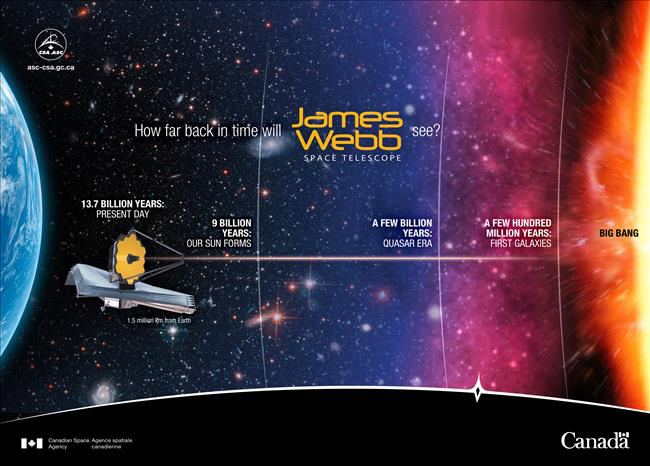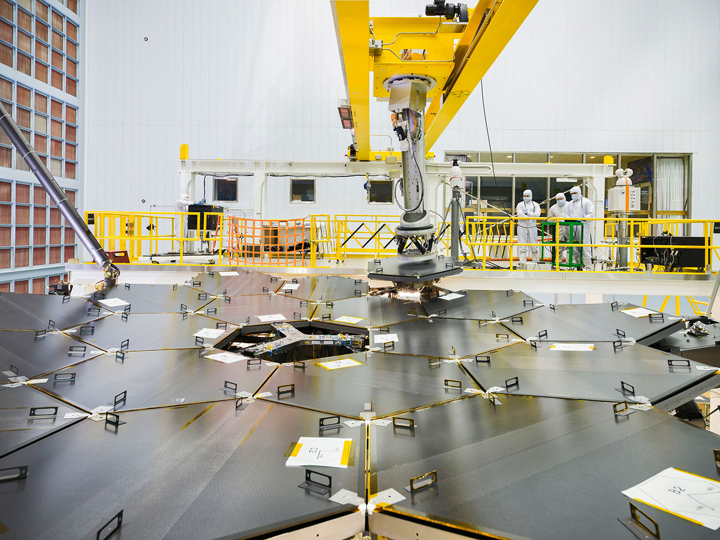Once in space, it will be the largest telescope ever launched, and it is getting closer to completion.

The James Webb Space Telescope (JWST) reached a milestone this week when the 18th and final segment of the telescope’s primary mirror was installed at NASA’s Goddard Space Flight Center in Maryland.
In order to build a large telescope mirror, smaller mirrors are used and placed together. In the case of the James Webb, each segment is about 1.3 metres across and weighs about 40 kg. Together the mirrors will make up a 6.5 metre mirror.
READ MORE: Giant Magellan Telescope breaks ground in Chile, set to be world’s largest
“Scientists and engineers have been working tirelessly to install these incredible, nearly perfect mirrors that will focus light from previously hidden realms of planetary atmospheres, star-forming regions and the very beginnings of the universe,” said John Grunsfeld, associate administrator for NASA’s Science Mission Directorate in Washington. “With the mirrors finally complete, we are one step closer to the audacious observations that will unravel the mysteries of the universe.”
The James Webb will be the successor to the Hubble Space Telescope which has not only provided stunning images of our universe, but has been vital in providing scientific knowledge about our universe and its origins. The Canadian Space Agency has contributed to the telescope, providing the Fine Guidance Sensor (FGS) and the Near-InfraRed Imager and Slitless Spectograph, which will be capable of looking for exoplanets, detecting the atmosphere of small, habitable Earth-like planets and much more.
- L.A., Belfast… Rainbow Lake? Why a remote Alberta town joined cities in Plant-Based Treaty
- B.C. orca rescue near Zeballos planning to take a ‘few days’, officials say
- What to do about Olympic Stadium’s beleaguered old roof? Ideas are wanted
- SFU researchers say ant pheromones could help prevent tick bites

The telescope, which was almost cancelled in 2011 after budget cuts to NASA, will have cameras that will provide unprecedented resolution in visible light and near-infrared. Astronomers hope to use the telescope to peer back to the very early beginnings of the birth of our universe.
It is scheduled to launch in October 2018 on board an Ariane 5 rocket from French Guiana.
You can watch the work on the telescope on NASA’s live web cam feed.




Comments